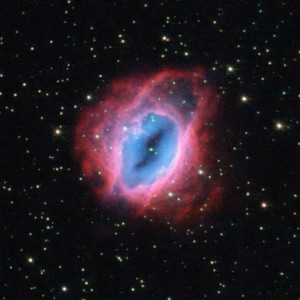FRIDAY, 15 MARCH 2013
An international team of astronomers appear to have made the first observations of a planet being born. The team, led by Sascha Quanz at (ETH Zurich, Switzerland) were studying a disc of gas and dust surrounding a young star, HD100546, which is about 335 light years away from Earth. Using the European Southern Laboratory’s Very Large Telescope (VLT) and pioneering data analysis techniques, the scientists were able to detect the presence of a protoplanet, that is one that is still in the process of forming, embedded within the disc of gas and dust. The protoplanet is a gas giant, much like Jupiter within our own solar system.Up until now, the exact mechanisms by which planets are formed has been difficult to study because all the planets near us were formed over 4 billion years ago. Instead scientists have had to rely upon computer simulations in order to come up with models to explain the birth of planets.
One favoured theory is that giant planets grow by capturing some of the gas and dust that is left following the formation of a new star and the images of the protoplanet forming in the disc surrounding HD100546 appear to support this hypothesis.
Although further investigation is necessary to confirm that this is not a fully formed planet, it is hoped that this finding will help to improve our understanding of how new planetary systems are formed and also provide an observable object upon which to test new theories.
arXiv:1302.7122 [astro-ph.GA]
Written by Laura Pearce.

